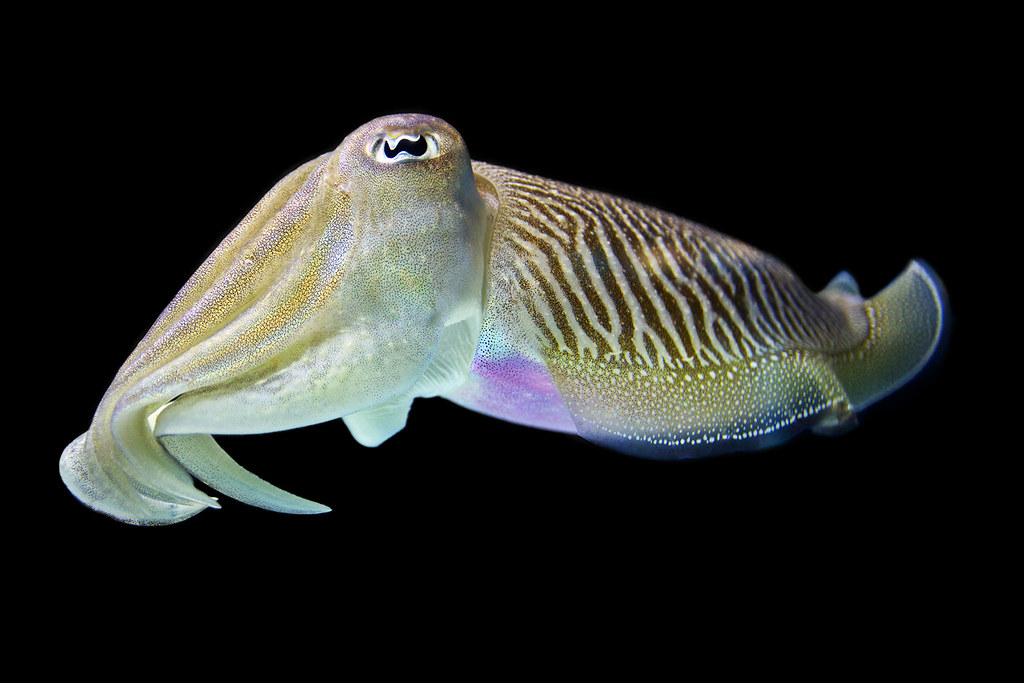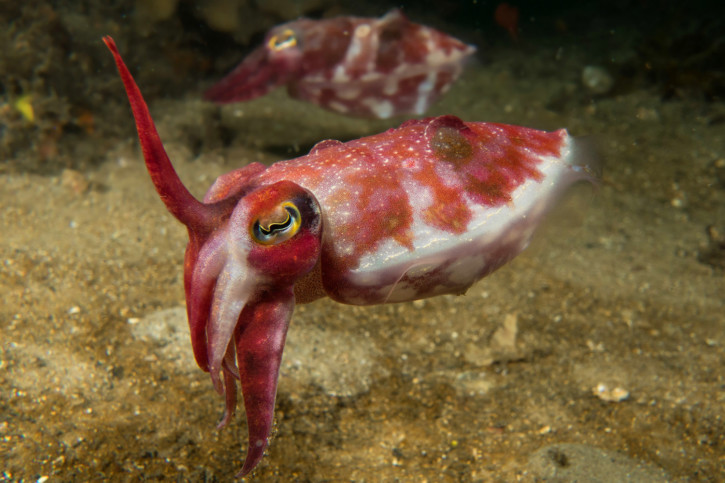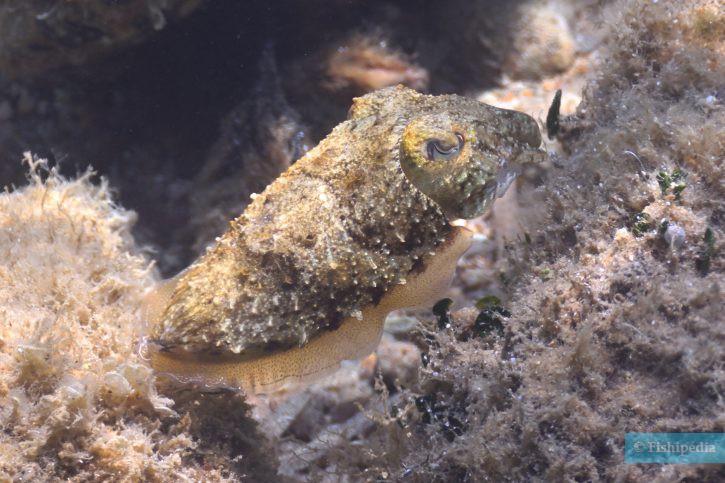Discover molluscs of the genus Sepia

The species of the genus Sepia are commonly called cuttlefish. They are found in most tropical and subtropical seas and oceans. Cuttlefish have an endoskeleton called cuttlebone. Made up of limestone, it grows floor after floor, becoming more complex (like a building on its foundations).
Cuttlefish vary the amount of gas present in the cavities thus created. This allows it to precisely regulate its buoyancy depending on how deep under water it is situated.Research is being conducted to understand why the bone structure changes with age. One of the hypothesis suggests that the more complex the skeleton, the better resistance to pressure and the better adjustment of the quantity of gas in the cavities. This may help the migration of adult cuttlefish to deeper waters.
The dorso-ventral part of cuttlefish is flat. Like for all cephalopods, the mouth has a beak and is positioned at the level of the feet. Around its mouth,the cuttlefish has 10 tentacles : 8 short ones with a sucker on all the inside, and 2 retractable used for hunting. These 2 ones have hammers with 6 rows of suckers at their end.
En attente de chargement...

